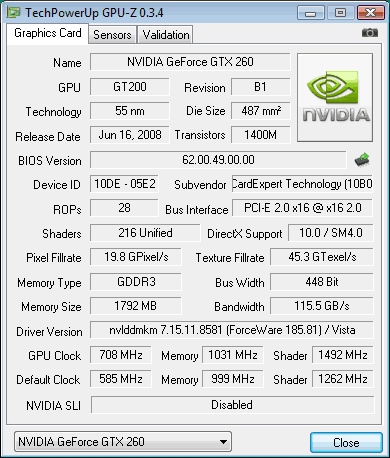Gainward GTX260 1792MB
10. FutureMark Hall Of Fame
Review Pages
Let's now see the overclocking limits of the GTX260 216 1792 using the latest RivaTuner with FutureMark The highest scores we got were 708MHZ/1492MHZ/1031MHz for core/shader/memory. Due to its 55nm design, the card's clocks could go even higher with a modded BIOS, but these were the top limits we found for a stable system using the Crysis/FutureMark stability software.

- Conclusion
The Gainward GTX260 216 1792MB is based on the Nvidia GTX260 platform but it comes with double the frame buffer for increased performance.
![]()
However, despite the the increased GDDR3 memory and the number of Stream Processors, the Gainward GTX260 216 1792MB isn't much faster than an overclocked GTX260 graphic card, in our case from XFX. We saw some performance gain only when we enabled the AA/AF at resolutions of 1680x1050 and higher.
Buying an overclocked GTX260 solution would cost you around €20 less. But getting a generic GTX260 would cost even less - and should be the right choice in our opinion.
If you like overclocking, the Gainward GTX260 216 1792MB will not let you down. Its 55nm design as well as the very good and quiet double cooling system of the card will leave you much options for experimenting with the card's GPU and shader clocks. The memory's clock cannot be pushed as high as we expected. And don't forget that by increasing the fan speed at 100%, it may be possible to get even higher oveclocking.

As a last word, we have to do with a good solution for people who tend to enable AA at high resolutions. It would not cost you much more than a "normal" GTX260 but for sure, the pre-overclocked versions seems to perform better and are also cheaper.
Possible buyers won't be disappointed by the Gainward GTX260 216 1792MB although the increased memory on board will give you some extra boost in a rather limited range of game titles.
